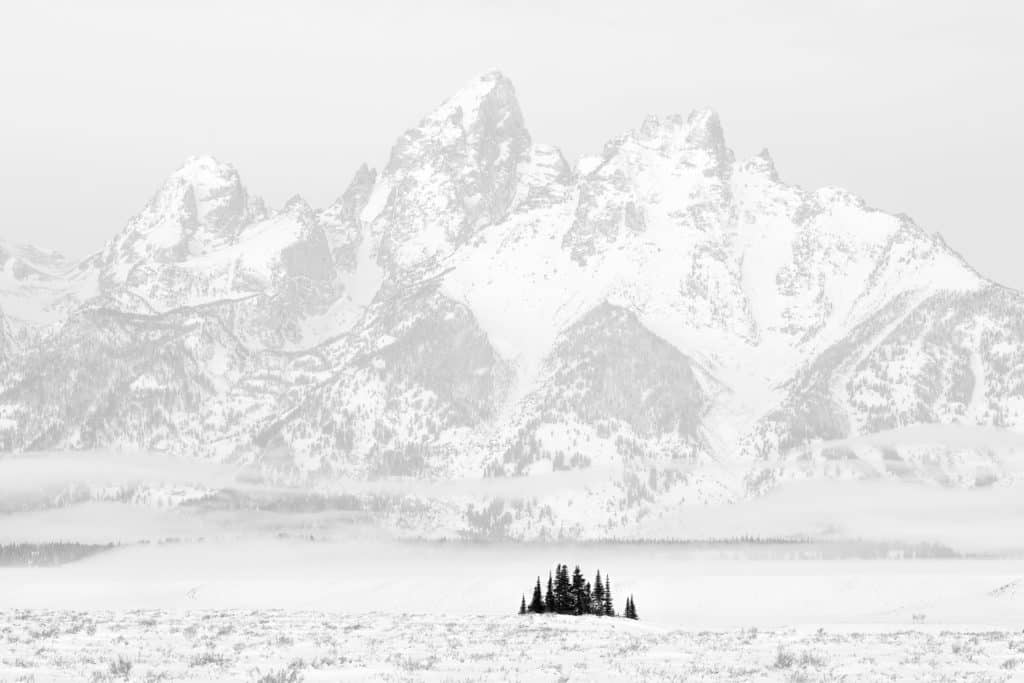Originally published at: https://www.naturephotographers.network/the-road-less-expected/
A number of years ago I stood alone in a small parking lot just off Wyoming Highway 89. It was an early January morning, an hour before sunrise, and the temperature hovered around -15F. I figured I had the whole park, or at least this parking lot, to myself. I stopped here because I noticed that the full moon was dropping between a couple of the peaks, and I thought that, when the sunlight hit the mountain tops, it might make an interesting composition. And best of all, I had it all to myself.
You can imagine my surprise when a car with out-of-state plates soon pulled into my parking lot. No worries, I thought, he was probably just curious what I was looking at and would soon depart. But, no, he pulled out a pair of tripods. Two. And mounted cameras to both. No worries, I thought, I can share the space with another photographer. But I was soon sharing it with a third car with a pair of photographers, then a fourth, and finally a fifth car from which exited photographers like clowns from a circus car. Maybe five, maybe six, each with a full bag of gear and a full-height tripod.
It was dark, early, and very cold. I could see no lights anywhere else along the highway. The only explanation I could come up with was that they were all here to photograph my full moon. Whereas I saw this scene as a serendipitous discovery it must have been, in fact, a well-known and published event. The parking lot was half-full of cars and, with five-foot high snow drifts surrounding us and restricting our movements, we were all shooting in relatively close proximity and into the same exact direction. This limitation meant we were all going to get the same photograph. Despite the scene showing potential, I packed up and left without a photograph.
The foundation of my creative philosophy is that I want to create compelling images that add to the photographic conversation, that offer something unique and compelling and, hopefully, unexpected. I knew that, had I stayed I would have gotten a good photograph, but it wouldn’t be much different than everyone else’s. I know I might be in the minority on this, but I just didn’t see the value.
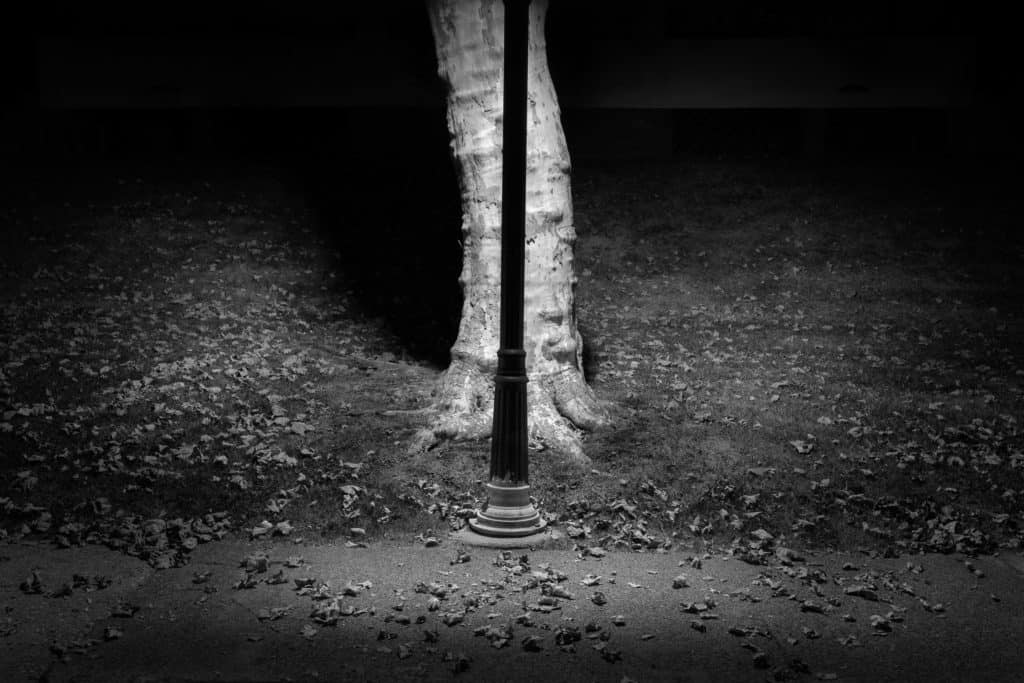
Half an hour later and a few miles away, while second-guessing my earlier decision, the photography gods smiled down upon me. I saw the hazy Tetons, shrouded in ice fog, with a small grove of dark evergreens mimicking their shape in the foreground. I climbed to the top of a hard-packed snow drift for a better vantage point, then proceeded to unwisely wade forward in four-feet of loose snow where, stuck, I shoved my tripod into the snow and had time to make only a couple of exposures before the sun came up and ruined things.
The photograph I made that morning is one of my all-time favorites, but it never would have happened had I stayed in the parking lot and got the expected photo.
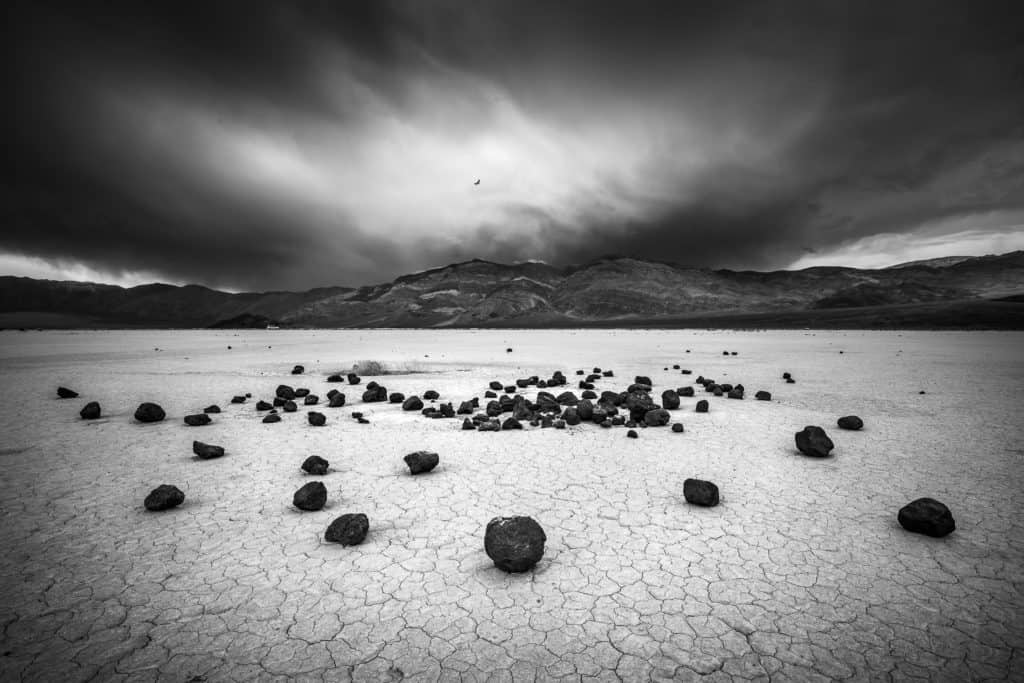
While in other popular areas such as Zion or Death Valley, I know that there are numerous well-worn photography spots. So, for the same reasons as above, I try to avoid them. Instead, I spend the bulk of my time looking for different viewpoints or more intimate scenes. But, if I do find myself in an iconic location, such as the Mesquite Sand Dunes at Death Valley, I strive to find compelling photographs which are a bit different from what is usually expected. Just because I am in an iconic location did not mean I had to return with a hard drive full of the expected, iconic photographs.
This is a repeating pattern for me when in popular areas such as Yellowstone or Death Valley. I either avoid the crowds entirely, or I work hard to create photographs which are unlike the usual and expected imagery. Of course, I often fail as will be the case for anyone trying to be creative.
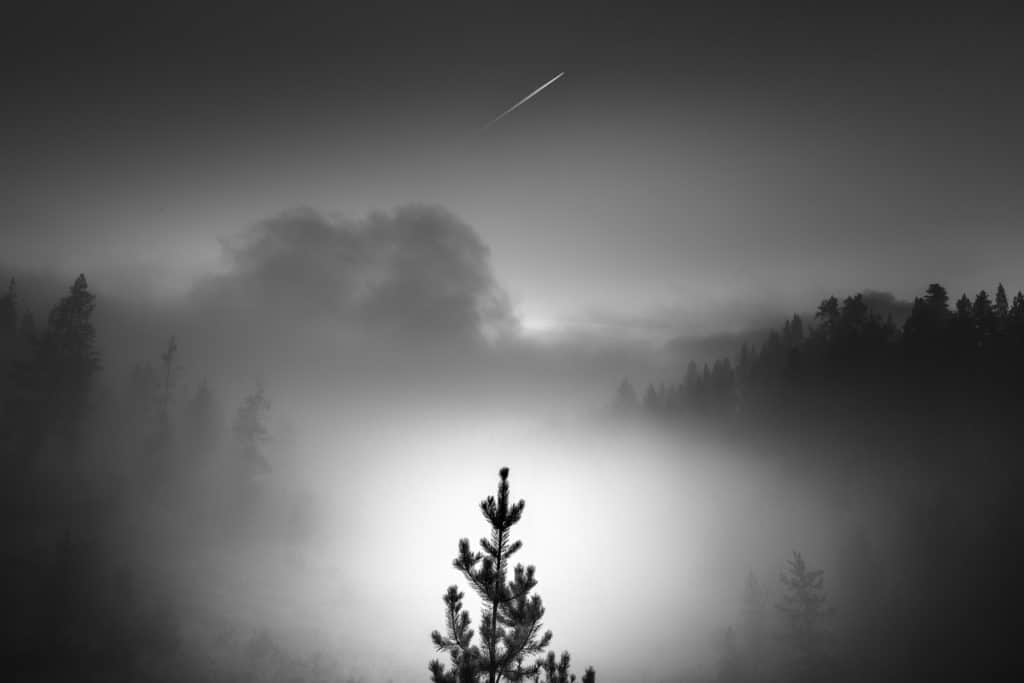
I was fortunate enough to become interested in landscape photography while living in eastern North Dakota, an agricultural area which is one of the flattest landscapes in the county. It is understated, quiet, reticent, and, at first glance, utterly un-photographable. Fly over country. Over time, however, I learned to appreciate the reticence and to see value in the sparseness and the space. I also appreciated how the photographs I made were different from those I was seeing in either books or social media. It’s very liberating working in photographically unpopular areas. Since nobody, including myself, have many expectations, I can work freely and without distraction.
On one such photography outing, I was driving a rural road when a voice in my head told me to turn left. It was an entirely new road for me, and I had no idea where it led. In less than two miles I found myself in heavy fog, staring at a bright white plastic fence which glowed in the otherwise dim light. The fence was alongside an old cemetery, so my first attempts at a photograph were to include both the fence and the grave stones as a broad study of the overall scene. But the photos look predictable and average. Just another cemetery photo: different but the same. I put the camera aside and walked around, cognizant that the fog could lift at any moment and ruin everything. I soon realized that the starkness of the fence against the enveloping fog was what was important, not the cemetery itself. The resulting photo is strong and unique, straddling the line between abstract and scenic.
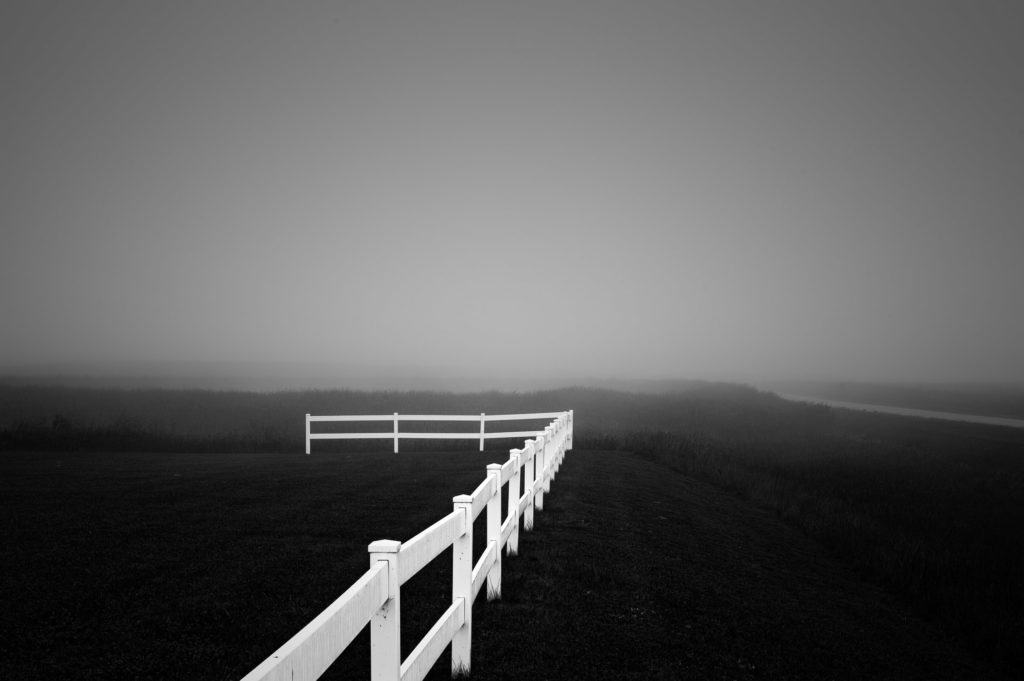
A different trip had me driving many miles of gravel back roads looking at plowed fields. Photographs of plowed fields are fairly common as the orderly rows can make strong subjects so, as always, I was looking for something different. Something a bit . . . more. When I passed a pair of fields—one wheat and the other potatoes—I didn’t think much about it. However, I could not get the scene out of my head and a few minutes later turned the car around. What I had not consciously noticed before was a telephone pole straddling the line between the two contrasting fields. Its placement added a unique and humorous element to an otherwise average scene, making for a rather sublime and unexpected photograph.
It’s both refreshing and frustrating to work in quiet, reticent, and unpopular areas. On the one hand, the work created will, in all likelihood, be unique. On the other hand, the areas are photographically unpopular for a reason, they are difficult and don’t give up their gems easily. It takes a lot of patience.
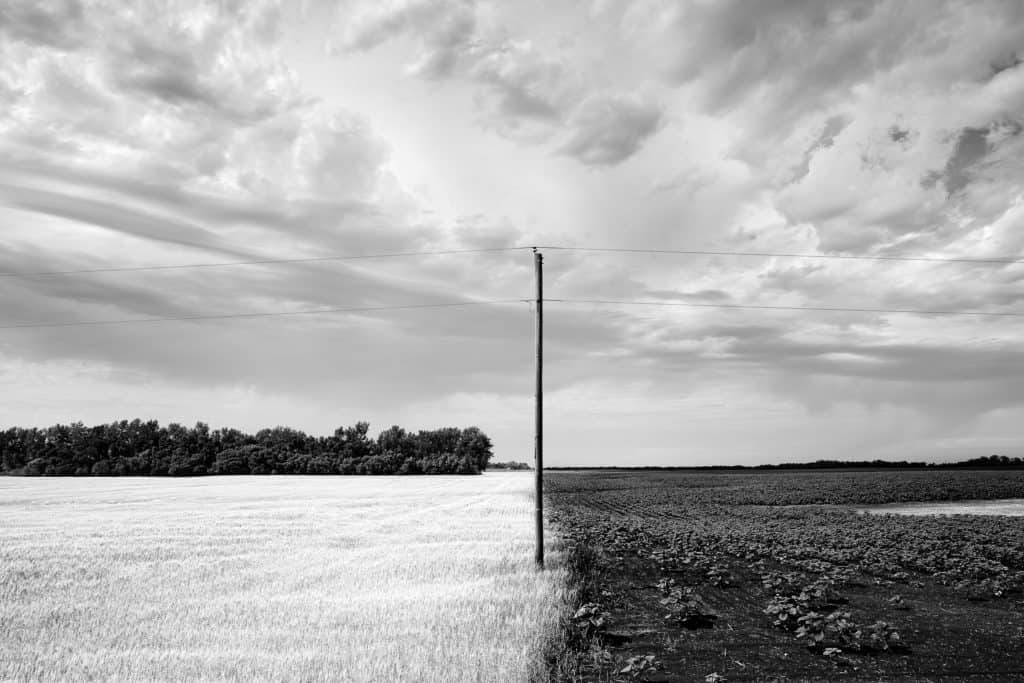
We each photograph for our own reasons but, at least for me, contributing to the art is important. I could easily populate my portfolio with beautiful photographs simply by looking for interesting images and duplicating them. But why? They would not be mine. Let’s leave the duplication to the office copy machine. There is an adage which states that the photographs we create are our autobiography. What and how we choose to photograph says something innate about us. But if we don’t create our own work, then our work says nothing.
Photography is easy, but creativity is hard. It takes dedication, patience, sacrifice, and risk. That means going against the masses, turning away from the crowds, avoiding the obvious, and facing a different direction, even if that direction is towards subjects as unconventional as a light pole, animal carcass, or litter. Yes, we are going to fail. A lot. But it also means our successes will be ours, and ours alone.
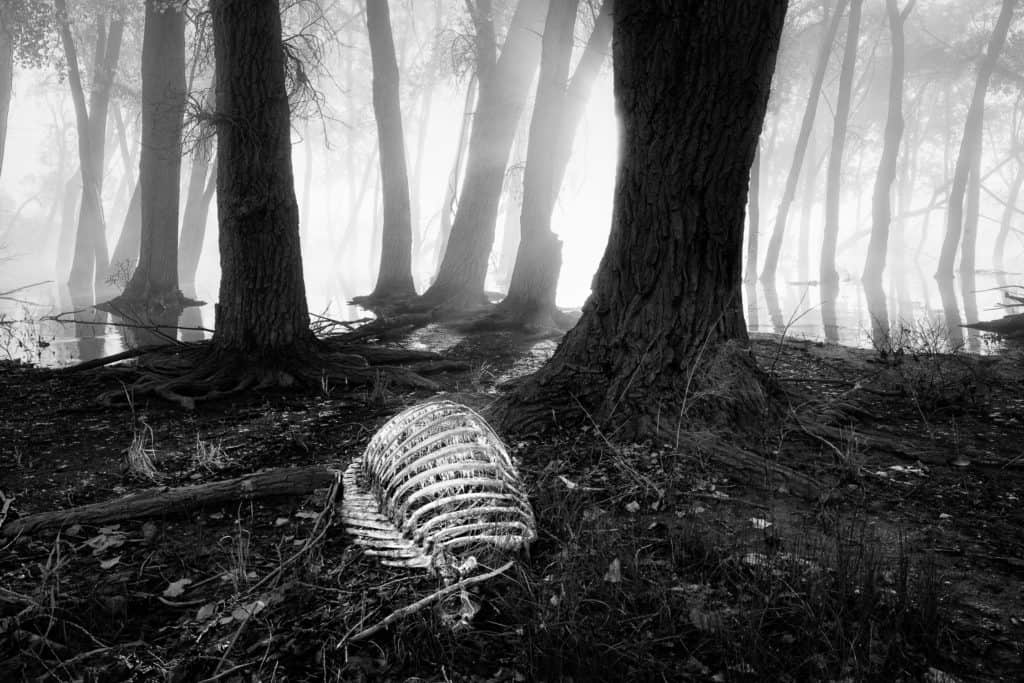
That all said, there is nothing wrong with photographing iconic scenes. They are iconic because they are spectacular (even if photographically common), and we should witness them for ourselves. The trick is to not let ourselves or our work become defined by them. A dirty little secret that the so-called influencers don’t want you to know is that there is a near infinite number of creative and unique photographic possibilities out there. We don’t have to huddle up in groups. Be free.
I get asked a lot about how to develop, or realize, our personal style. I used to answer that patience was the key. That it will come but should not be forced. I realize now I was dead wrong. The only way to develop our respective personal styles is to take an active role by avoiding group-think, and minimizing the temptations of cliches.
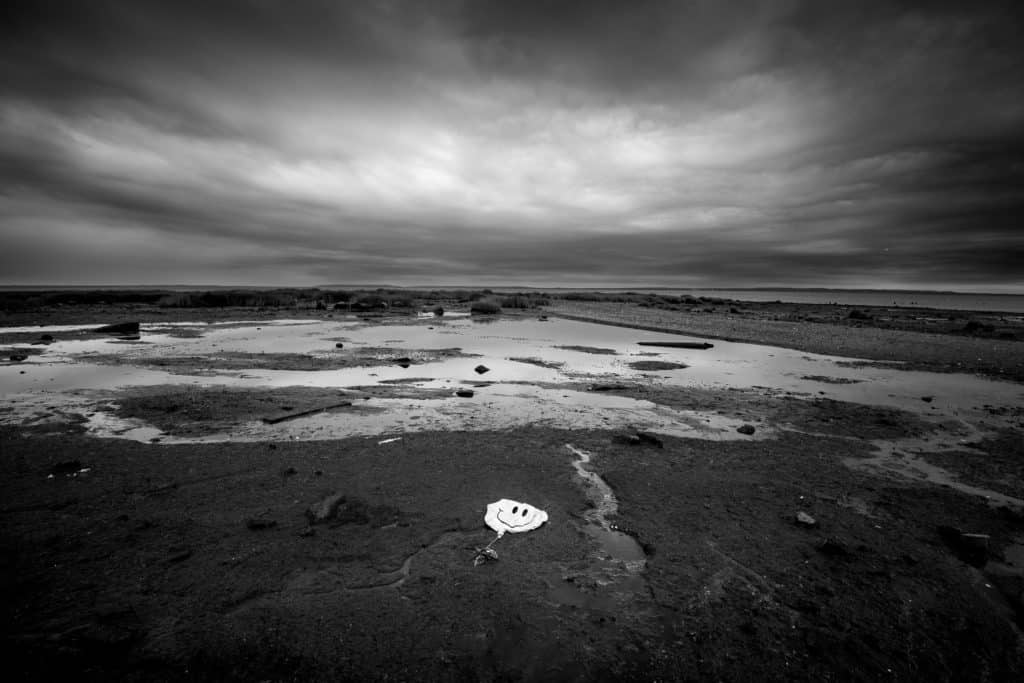
My advice, whether working in iconic and popular locations or in fly-over country, is to trust your instincts and be true to yourself. Listen to that inner voice—We all have one. And try hard to add to the creative conversation that is photography, create work which is personal, thus unique. And take the road less expected.
Turn off Notifications for Articles
If you prefer not to receive notifications about future articles, please click here to modify your notification preferences. You can remove any tags you do not want to be notified about under the Watching First Post section. These are broken down by genre, so if you only want to get notifications about landscape, macro, etc., you can do that here.
